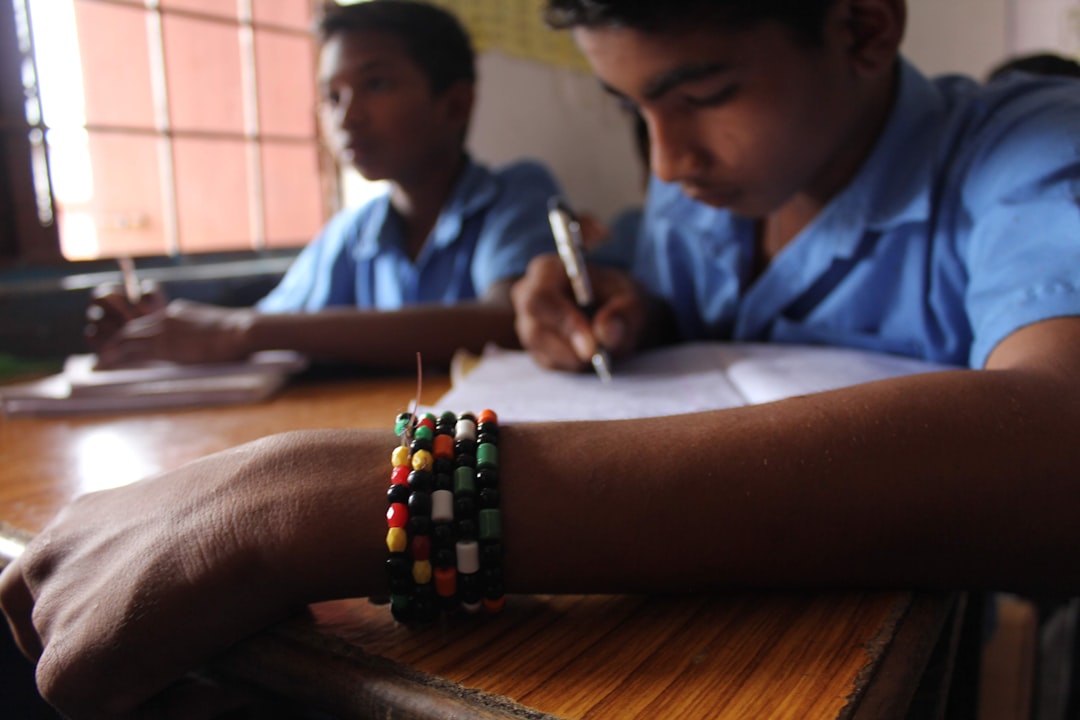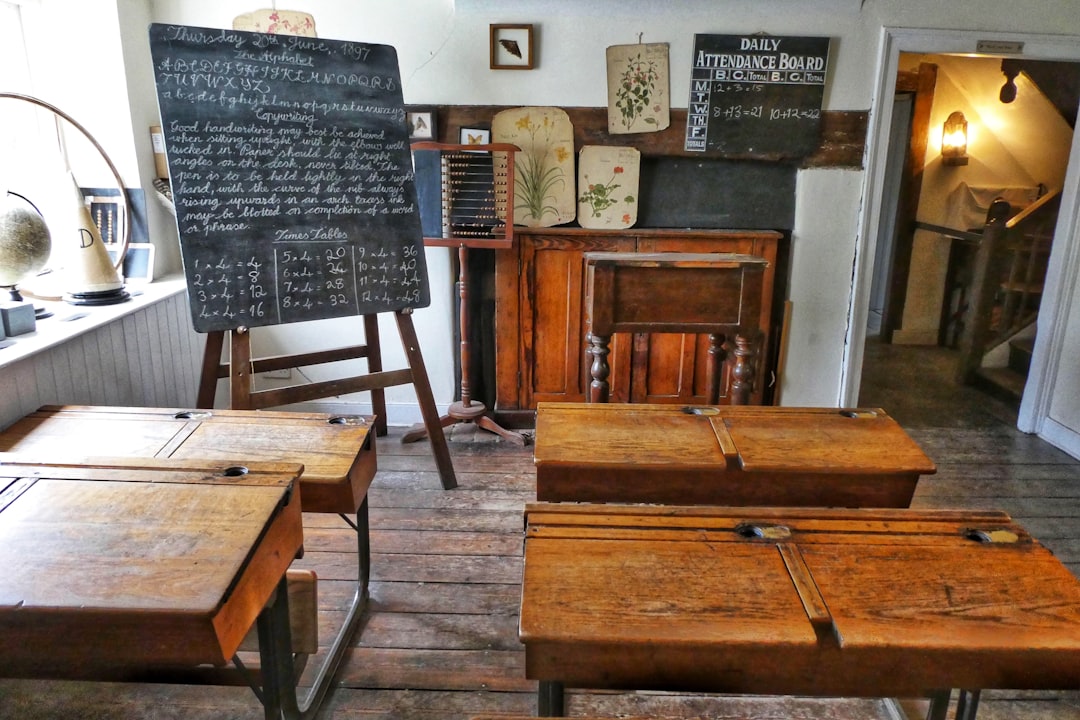

Engage prospects with a scan and streamline customer engagement with FREE QR code marketing tools by Sona – no strings attached!
Create a Free QR CodeFree consultation

No commitment

Engage prospects with a scan and streamline customer engagement with FREE QR code marketing tools by Sona – no strings attached!
Create a Free QR CodeFree consultation

No commitment
QR codes have quickly evolved from novelty to necessity in connecting physical environments with digital insight. Specialty education schools, which offer tailored learning for unique academic, therapeutic, or developmental needs, frequently face substantial barriers in gathering timely and actionable feedback from students, parents, and educators. Traditional approaches often result in low response rates, losing valuable signals from key stakeholders and fragmenting data needed for effective improvement.
QR codes provide a simple, frictionless channel to capture feedback right at the point of experience, whether on classroom doors, event signage, printed progress reports, or take-home communications. A single scan gives instant access to dynamic surveys, resource links, or review forms, all without tedious logins or app downloads. This also helps schools capture data from every engagement, even from users who prefer to remain anonymous or who typically bypass traditional forms. For form-driven surveys, see Sona QR’s guide to Google Forms.
Harnessing QR codes unlocks a strategic feedback loop for specialty education schools, enhancing engagement, streamlining data collection, and minimizing missed opportunities. This approach ensures more cohesive, data-driven improvements, bridging gaps between offline interactions and digital program refinement at every stage of the educational journey. Explore key features in the Sona QR product overview.

The persistent challenge of low survey participation and missed insights often leaves specialty education schools without the full picture needed for improvement. Many stakeholders experience the program in person but never convert that experience into structured feedback. QR codes offer an effective bridge, connecting physical touchpoints to digital analytics and serving as a proven communication tool, making it easier to capture timely feedback and spot emerging opportunities in real time.
The goal is to meet people where they already are. Instead of handing out paper forms or sending emails days later, you can invite feedback at the exact moment a student completes a therapy session, a parent reviews a progress report, or a family attends an open house. A thoughtful plan that aligns use cases, goals, and placements will raise participation, cut friction, and produce higher quality insights that staff can act on quickly.
Many schools have moved away from manual, disconnected feedback collection to QR-driven workflows that increase participation and data quality. These approaches draw out otherwise hidden insights, such as from parents who diligently read progress reports but rarely return forms, and they make it simpler for staff to close the loop with stakeholders.

Specialty education schools commonly struggle with information gaps caused by the limits of physical communication channels. Parents may review a progress report at home, attend a classroom visit, or join an event, but then forget or decline to complete a lengthy feedback form later. The result is lost insights and slower program improvement. QR codes help close these gaps by transforming familiar materials like appointment cards, newsletters, and permission slips into interactive entry points for feedback and follow-up.
Speed and simplicity matter in this environment. Parents and students are busy, and many may be managing complex schedules or additional support services. A QR code makes it possible to capture a thought in the moment it occurs. That immediacy increases participation and reduces bias that creeps in when feedback is delayed. It also makes your communications more responsive, since you can change survey links or resources without reprinting, supporting both family feedback and student learning.
QR codes do more than digitize a paper form. They create a continuous feedback surface across your school community, capturing moments of intent that would otherwise remain invisible and translating them into data that supports smarter decisions.

Given the variety of environments across special education, autism programs, therapeutic schools, and inclusion-focused classrooms, your QR toolkit needs to fit many scenarios. The right formats make it easy to collect, route, and respond to input, even when survey participants prefer to remain anonymous or have limited time.
Dynamic QR codes are especially useful in schools because they let you change destinations without reprinting materials. If a workshop agenda evolves or a survey period ends, you can redirect the QR to an updated form or resource hub instantly. Static codes still have a place, such as a permanent link to a counseling department page or a downloadable handbook.
A centralized platform, such as Sona QR, helps generate, manage, and update these codes in one place while tracking engagement across all formats.

Opportunities for improvement often hide where feedback drops off or is never requested in the first place. Mapping physical environments and communications to likely feedback moments ensures more of your community’s insights turn into data you can measure and act on.
Prioritize placements where intent is clear and the ask feels natural. Focus first on high-traffic areas and materials that already prompt parents to think about progress, satisfaction, or support needs. A small number of well-placed, well-labeled QR codes will outperform a scattershot approach, as shown in this school district example.
A targeted approach keeps your feedback pipeline focused and measurable. By aligning codes with milestones and moments that matter, you transform routine interactions into a steady stream of actionable insight.

Specialty education leaders often juggle many priorities, from individualized instruction to family communication. QR codes convert brief interactions into structured signals that inform decisions. Start with a few high-impact use cases, then expand as you see consistent results.
The key is to link each use case to a defined outcome, such as faster interventions after therapy sessions or higher completion rates for satisfaction surveys. When you pair the QR with a clear benefit and a short experience, participation increases significantly.
Each use case transforms a fleeting moment into data that supports faster support, better programs, and higher satisfaction.
Every scan is a signal that reveals intent, context, and timing. In education, these signals help you differentiate between prospective families exploring options, current parents monitoring progress, and alumni sharing advocacy stories. Segmenting these audiences automatically makes your follow-up more relevant and effective. For advanced retargeting, see Sona’s Playbook titled “intent-driven retargeting: driving high-impact campaigns with first-party intent signals” in this Sona Playbook.
When you deploy unique codes by location and purpose, you can build lists that reflect real behavior instead of assumptions. That enables practical retargeting, from emailing a recap to workshop attendees who scanned a sign-in sheet to sending resources to parents who engage with counseling materials.
By building audience segments from QR engagement, you convert anonymous attention into structured outreach. The result is higher response rates, better resource targeting, and more supportive relationships.
Disconnected campaigns frustrate families and slow progress. QR codes unify offline and online experiences so that every flyer, email, or event supports a consistent journey. For specialty education, this often means linking printed materials to quick feedback, sign-ups, or resource hubs.
Mapping codes across channels also makes offline media measurable. When every handout and hallway poster drives traffic to a trackable destination, you learn which topics and formats move people to act. That feedback can inform your messaging and resource allocation, across channels like posters, flyers, and direct mail. For strategy on measurement, read Sona’s blog post “the essential guide to offline attribution: maximizing ROI through offline channels” in this offline attribution guide.
A unified QR strategy transforms your print footprint into a connected, data-driven funnel. With a platform like Sona QR, you can manage codes across channels, monitor performance, and sync scan activity to your CRM.
Missed implementation steps can undercut participation and data quality. A simple, repeatable checklist keeps teams aligned and ensures each QR initiative, from a classroom survey to a school-wide reporting workflow, delivers measurable impact.
Use the following steps to plan, launch, and optimize QR campaigns. Customize each step to your program goals, calendar, and stakeholder needs. When possible, test on a small group first, then scale to more classrooms or campuses.
Clarify the outcome you want and the audience you are targeting. Pick a single job to be done, such as collecting post-meeting feedback, capturing incident reports from staff, or logging interest in an inclusive workshop series. Narrow scope drives better design and clearer success criteria.
Select the format that best matches the action you need. For most feedback use cases, dynamic web link or form codes are best since they support tracking and can be edited later without reprinting.
Design for scannability and clarity. Add your logo and brand colors to improve trust. Make the call to action explicit, specific, and benefit oriented so families know what they will get when they scan.
Place codes where your audience already pays attention. Tie each placement to a natural moment of reflection or decision, such as the end of a session or the close of an event.
Measure what happens after each scan, not just the scan itself. Look at completion rates, response quality, and time to follow-up. Iterate on questions, CTAs, and placements based on the data. For enrollment-focused campaigns, see ideas in this enrollment marketing guide.
Without robust tracking, valuable opportunities for improvement or program growth can slip away. QR analytics reveal who engages, when they engage, and through which materials. Schools can tie this activity to class, program, and event outcomes, enabling resource allocation and follow-up grounded in data rather than guesswork.
Analytics also enable faster response. If a post-session survey flags a concern, staff can prioritize outreach within hours. If scan data shows low engagement for a particular workshop series, you can test new formats or topics before committing more resources. Over time, scan and completion metrics serve as benchmarks that guide planning and budgeting.
Using platforms like Sona QR and Sona.com, schools can unify offline scans with online behavior, email engagement, and CRM updates to build a complete picture of the journey from first touch to advocacy.
Scaling QR impact requires steady iteration. Focus on the placements and messages that consistently produce high participation and high-quality responses. Keep content fresh and the benefits clear so families and staff see value in scanning. Explore seasonal back-to-school ideas to keep campaigns timely.
As your program matures, use automation to distribute resources and close the loop faster. When a parent completes a survey, trigger a thank-you and a link to related materials. When a staff member logs an incident, notify the right team and update the record automatically.
These tactics build a durable system where every scan contributes to continuous improvement and every stakeholder sees that their voice matters.
Many specialty education schools have used QR campaigns to make their feedback loops more inclusive, timely, and measurable. The most successful examples share a few traits: short surveys, clear CTAs, and a fast path to follow-up. They also close the loop with participants so trust grows over time.
Consider how you can adapt the following ideas to your programs and culture. Start with a pilot in one classroom or event series, measure the results, then scale. For educator engagement tactics, see this teacher engagement resource.
These examples demonstrate how closing the offline-to-online gap can directly improve services, guide investments, and strengthen community engagement.
QR strategies fail most often when content grows stale, placements are inconvenient, or CTAs lack clarity. Keeping the experience relevant and easy is essential. Refresh questions periodically, rotate prompts so families do not tune them out, and keep surveys short enough to complete in one minute.
Placement matters. Codes that are too small, too high, or competing with visual clutter will be missed. Similarly, too many codes in the same spot can confuse people. Choose one clear ask per surface and label it with a specific benefit. For high-traffic screens, consider digital signage best practices to improve visibility and scanning.
By anticipating these pitfalls and following best practices, schools can turn every scan into a meaningful contribution to program quality.
QR codes empower specialty education schools to transform every printed handout, classroom display, and event takeaway into an opportunity for meaningful engagement. As schools continue to navigate the challenge of lost feedback and missed signals, integrating QR-enabled strategies offers a proven path to capturing previously untracked insights, automating data integration, and enabling prompt response or follow-up.
The result is a feedback ecosystem where each interaction supports tangible growth in program quality, parent satisfaction, and ongoing advocacy. With platforms such as Sona QR to generate, track, and integrate scans, and Sona.com to attribute outcomes across journeys, schools can turn everyday moments into measurable, data-driven progress for every student and stakeholder. Start creating QR codes for free.
QR codes have revolutionized specialty education schools by transforming traditional feedback collection into a seamless, data-driven process. Whether it’s enhancing student engagement, streamlining feedback loops, or fostering more personalized learning experiences, QR codes replace cumbersome paper surveys with instant, mobile-friendly interactions that capture real-time insights to improve educational outcomes.
Imagine having immediate access to detailed feedback from students, parents, and educators—allowing you to tailor programs with precision and responsiveness. With Sona QR, you can create dynamic, trackable QR codes in seconds, update feedback campaigns on the fly without reprinting, and link every scan to actionable data that drives continuous improvement. No more guesswork, just smarter decisions that elevate your specialty education offerings.
Start for free with Sona QR today and transform every scan into meaningful insights that propel your school’s success forward.
Specialty education schools include special education, autism programs, therapeutic schools, and inclusion-focused classrooms that tailor learning to unique academic, therapeutic, or developmental needs.
They provide individualized instruction and supports designed for unique academic, therapeutic, or developmental requirements, often using tailored programs and specialized resources.
Benefits include personalized learning experiences, targeted therapeutic support, improved family communication, and data-driven program improvements that address individual student needs.
Parents should consider schools that use tailored programs, effective communication tools like QR codes for timely feedback, and those that demonstrate data-driven improvements aligned with their child's unique needs.
These schools use individualized instruction, therapeutic interventions, inclusion strategies, and continuous feedback loops enabled by tools like QR codes to adapt teaching to each student's needs.
Use Sona QR's trackable codes to improve customer acquisition and engagement today.
Create Your FREE Trackable QR Code in SecondsJoin results-focused teams combining Sona Platform automation with advanced Google Ads strategies to scale lead generation

Connect your existing CRM

Free Account Enrichment

No setup fees
No commitment required

Free consultation

Get a custom Google Ads roadmap for your business






Launch campaigns that generate qualified leads in 30 days or less.
